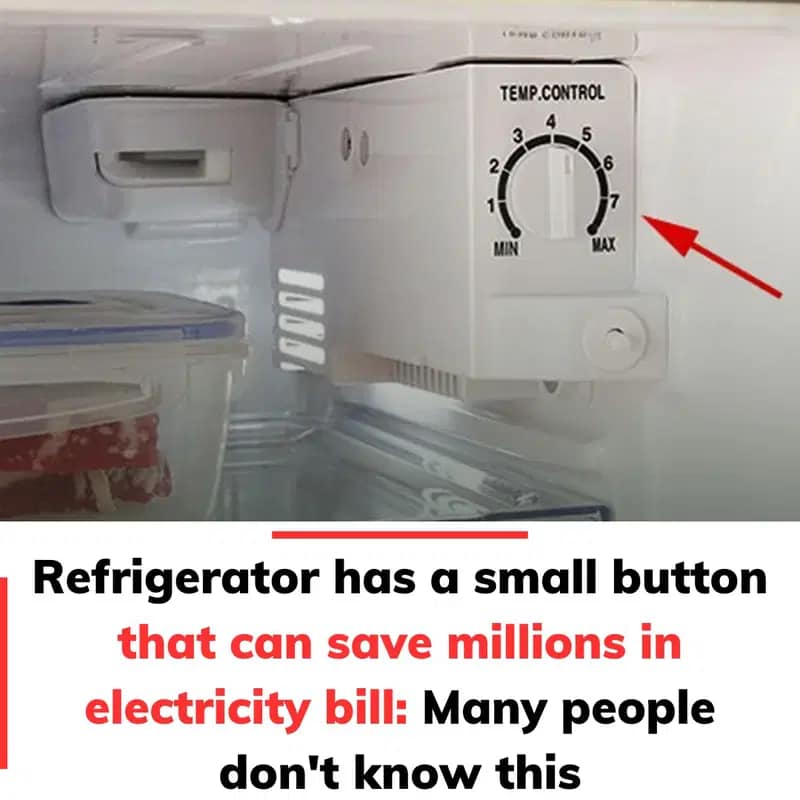Many people may not realize this, but the placement and usage habits of a refrigerator can significantly impact its efficiency, energy consumption, and lifespan. Refrigerators are designed to release heat from either their two sides or the back, depending on the model. This heat dissipation process is essential for maintaining the appliance’s optimal performance. However, when the refrigerator is placed too close to walls, furniture, or other obstructions, the heat cannot escape efficiently. As a result, the appliance must work harder to maintain the desired internal temperature, leading to increased power consumption and potential long-term damage to its internal components.

To prevent these issues, it’s important to position your refrigerator with adequate space for ventilation. Experts recommend leaving at least a few inches of space between the refrigerator and the surrounding walls or cabinets to allow proper airflow. This simple adjustment helps prevent overheating and ensures the refrigerator operates smoothly without straining the compressor. Over time, an overworked compressor can wear out faster, leading to costly repairs or even the need for a full appliance replacement.
In addition to maintaining proper spacing, it’s equally important to avoid placing your refrigerator near other heat-generating appliances. Devices such as ovens, electric stoves, and microwaves emit substantial amounts of heat when in use. If a refrigerator is positioned too close to these appliances, the surrounding temperature will rise, making it harder for the refrigerator to maintain its internal coolness. This increased workload on the compressor not only drives up electricity bills but also accelerates wear and tear on essential components.
The placement of a refrigerator is not the only factor that affects its efficiency. Daily usage habits also play a significant role in determining the appliance’s energy consumption and lifespan. One common mistake many people make is leaving the refrigerator door open for extended periods. Whether you’re searching for a specific item or just taking your time deciding what to eat, keeping the door open allows cold air to escape and warm air to enter. This disrupts the internal temperature balance, forcing the compressor to work harder to restore the optimal cooling conditions.
To prevent unnecessary energy waste, it’s best to plan ahead before opening the refrigerator door. Know what you need, grab it quickly, and close the door firmly. Additionally, regularly check the refrigerator door seals to ensure they are in good condition. Worn-out or damaged seals can allow cold air to leak out, even when the door is closed, causing similar issues.
Another important consideration is the refrigerator’s internal organization. Overcrowding the shelves can obstruct airflow, making it harder for the cool air to circulate evenly. This can result in certain sections of the refrigerator being colder than others, leading to uneven cooling and potential food spoilage. On the other hand, an almost-empty refrigerator isn’t efficient either, as it requires more energy to cool empty space. Striking a balance by keeping the refrigerator moderately stocked ensures optimal airflow and efficiency.
Routine maintenance is another key factor in keeping your refrigerator running smoothly. Dust and dirt can accumulate on the refrigerator’s condenser coils, located either at the back or underneath the appliance. When these coils are dirty, the refrigerator has to work harder to release heat, which increases energy consumption and reduces its lifespan. Regularly cleaning these coils with a soft brush or vacuum can significantly improve efficiency.
Additionally, it’s essential to set the refrigerator and freezer temperatures correctly. The recommended temperature for a refrigerator is around 37-40°F (3-4°C), while the freezer should be kept at 0°F (-18°C). Setting temperatures too low wastes energy, while setting them too high can lead to food spoilage.
Modern refrigerators often come with energy-saving features and modes, such as vacation mode or eco-mode. These features are designed to reduce energy consumption when the refrigerator isn’t in heavy use. If your appliance includes these settings, make use of them whenever appropriate.
In conclusion, the efficiency and longevity of your refrigerator depend on a combination of proper placement, thoughtful usage habits, and regular maintenance. Ensuring adequate ventilation, keeping it away from heat-generating appliances, minimizing door-opening time, and maintaining proper organization inside are all simple yet effective ways to reduce energy consumption and prolong the life of your refrigerator. By adopting these practices, you’ll not only save money on electricity bills but also contribute to a more sustainable and efficient home environment. So, the next time you glance at your refrigerator, take a moment to consider whether it’s positioned correctly and being used efficiently—it could make a world of difference in both performance and cost savings.





